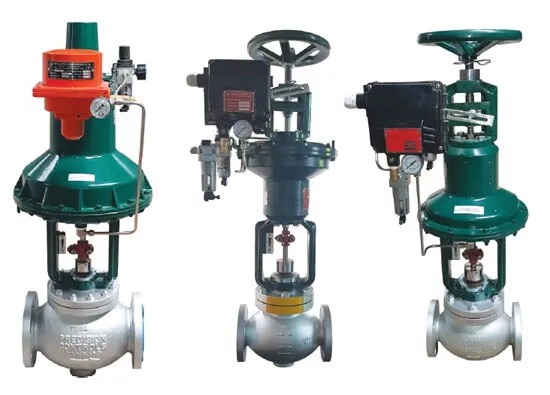


Understanding Pneumatic Control Valves: Common Faults, and Troubleshooting Techniques
Pneumatic Control Valves: Operation, Faults, and Troubleshooting
Pneumatic control valves are vital in industrial applications, converting air pressure into mechanical motion to regulate fluid and gas flow. These China Control Valves ensure automation and efficient flow control, and maintaining them is key to minimizing downtime. Below is a brief overview of their components, common faults, and troubleshooting techniques.
Actuator: The actuator transforms air pressure into mechanical movement. It can be a diaphragm or piston type. Diaphragm actuators are for low-pressure applications, while piston actuators are suited for high-pressure environments. Actuators can be single-acting (using a spring for return) or double-acting (using air pressure for both movements).
Spring: In single-acting actuators, a spring serves as a fail-safe mechanism, returning the valve to a safe position when air pressure is lost.
Yoke: The yoke connects the actuator to the valve body, providing stability and alignment.
Positioner: The positioner adjusts the actuator for precise valve positioning. It can be pneumatic, electro-pneumatic, or digital, offering varying levels of control and feedback.
Bonnet: The bonnet seals the valve stem and protects internal components while allowing maintenance access.
Valve Body: The valve body houses components like the seat and plug. Types include globe, ball, butterfly, and gate valves, each suitable for different flow control needs.
Valve Stem: The valve stem connects the actuator to internal components, transmitting motion to open or close the valve.
Seals and Gaskets: These components prevent leaks, ensuring safe and efficient operation.
Valve Seat and Plug: These parts regulate flow, with the plug moving into the seat to either allow or block fluid.
Air Leaks: Leaks in the air supply or valve can cause sluggish valve movement. Causes include worn seals, cracked hoses, or loose fittings.
Sticking or Jamming: Debris or corrosion can prevent the valve stem from moving freely, affecting flow control.
Actuator Failure: Actuators can fail due to wear or damage, causing the valve to remain stuck in one position.
Positioner Malfunction: Miscalibrated or faulty positioners can result in inaccurate valve positioning.
Seal Wear and Leakage: Worn seals lead to air or fluid leaks, reducing efficiency and posing safety risks.
Review Maintenance Records: Check logs for recurring issues to identify patterns.
Visual Inspection: Look for signs of wear, corrosion, or leaks in components like the actuator, yoke, and bonnet.
Check Air Supply: Verify air pressure with a calibrated gauge and inspect hoses for leaks.
Actuator Inspection: Manually test the actuator’s movement and check for leaks or damaged components.
Positioner Calibration: Calibrate the positioner to restore accurate control. Check for electrical faults or signal interference.
Control Signal Verification: Ensure control signals are accurate and consistent, checking for wiring or electronic issues.
Manual Operation Test: Operate the valve manually to check for smooth movement and listen for unusual noises.
Internal Component Inspection: Disassemble the valve if needed, inspecting the seat, stem, and plug for debris or wear.
Pipeline Inspection: Clean or replace blocked or corroded pipeline sections.
Pneumatic control valves play a crucial role in fluid and gas flow regulation. Recognizing common faults and applying effective troubleshooting methods ensures these valves operate efficiently. Regular maintenance and early problem detection can prevent system disruptions and extend the valve’s lifespan, maintaining operational continuity.Know more about Google SEO Directory
